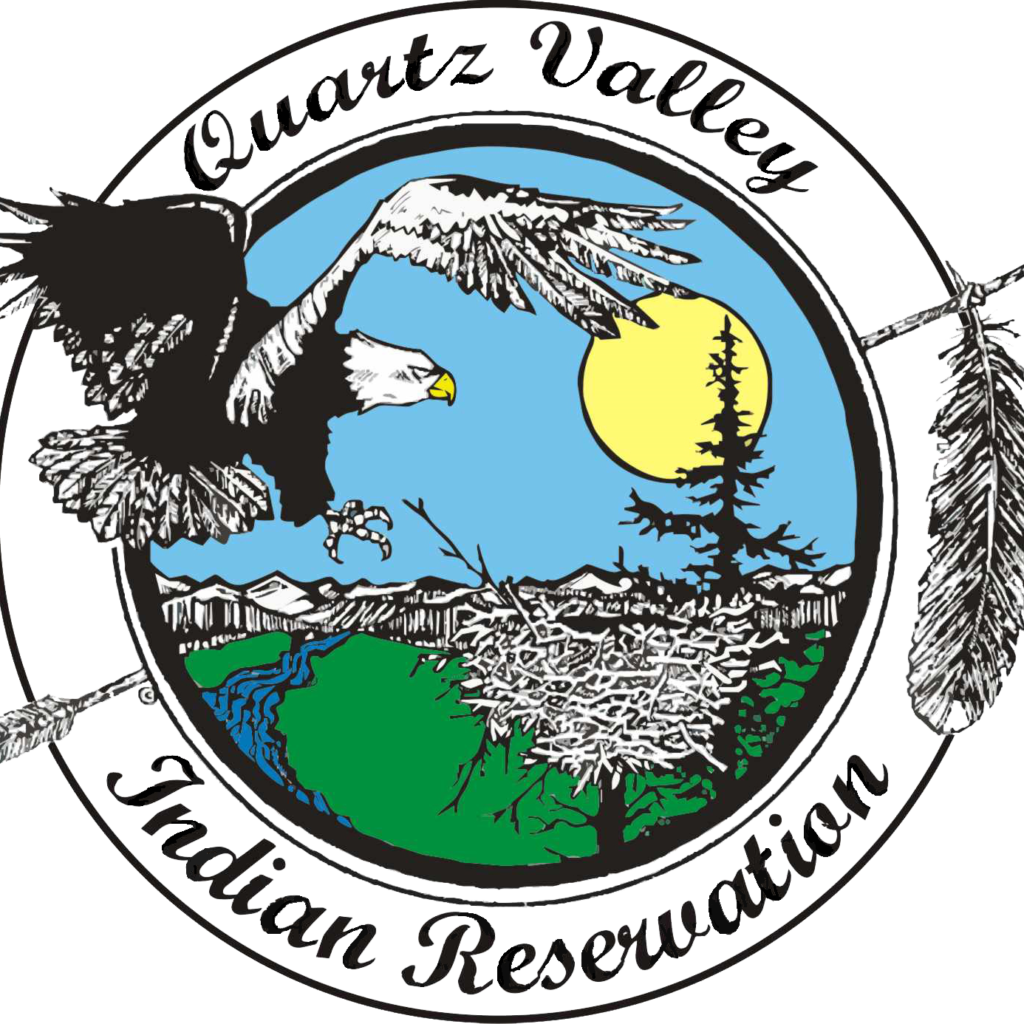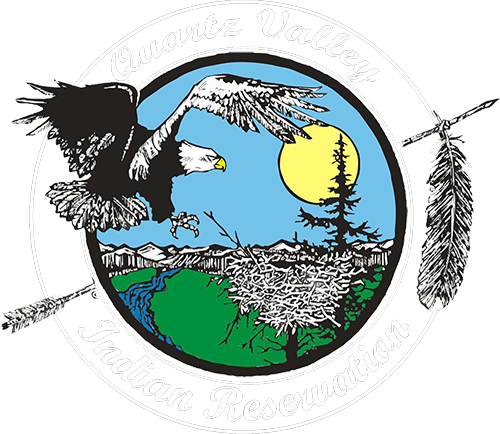History of QVIR
Our History
The Quartz Valley Indian Community of the Quartz Valley Reservation of California (dba Quartz Valley Indian Reservation, herein QVIR/Tribe) is a sovereign, federally recognized Tribe in rural western Siskiyou County in far northern California. The Tribe is one of two federally recognized Tribes in Siskiyou County. (The other is the Karuk Tribe, with which many current QVIR Tribal members share a common heritage.) Tribal membership is 397 as of February 2023.
QVIR was originally chartered as a result of the Indian Reorganization Act of June 18, 1934, or Wheeler-Howard Act. That federal legislation established it as a sovereign, self-governing, federally recognized American Indian Tribe. The Tribe adopted its constitution and by-laws on June 15, 1939. Its original membership was drawn from Shasta and Karuk culture groups. The Tribe lost its federal status on January 20, 1967, as a result of the California Rancheria Termination Act of 1958. Federal recognition was restored on December 22, 1983, through the US Federal Court decision Tillie Hardwick, et al. v. United States of America, et al. (Case #C-79-1710-SW). Prior to termination, the reservation totaled 605 acres, all of which were distributed among Tribal members at the time of termination. Most of that land was subsequently sold or lost through the legal process during the termination period. At the time of that first Hardwick decision, 129.64 acres of land were restored to the Tribal trust.
The reservation consists of approximately 210 acres, comprised mostly of trust land with some fee parcels. It is in a sub-valley of agricultural Scott Valley (ranching, farming, logging/forestry, recreation), about 10 miles from Fort Jones (pop. 653 in 2020) and 12 miles from Etna (pop. 678 in 2020). The towns, on State Highway 3, are the two main population centers in the valley. The county seat, Yreka (pop. 7,807 in 2020), is 27 miles distant from QVIR, northbound over State Highway 3’s 4,097-ft. Forest Mountain Pass. (Southbound from QVIR on State Highway 3, Scott Mountain Summit, a 5,554-ft. mountain-gap pass, closes every winter, isolating the reservation even more.) Yreka is the closest point the reservation is to an interstate highway (I-5 bisects the county north to south). Most government services are in the county seat and to a smaller extent in southern Siskiyou County, 30 miles farther from QVIR. Siskiyou County, population 43,853 in 2017, is the middle of three California counties bordering the state of Oregon, and roughly 6,347-square-mile of rural county.
The reservation sits on the cusp of ranch/farm bottomland and heavily forested mountains. Scott River tributary Shackleford Creek runs through QVIR. The 2,650-mile Pacific Crest Trail, which winds for well more than 100 miles through the western part of the county, passes within a few miles of QVIR in the Marble Mountain Wilderness. More than half of the Tribe’s 380-plus members as well as members of their extended families live within the QVIR service area, in reservation housing administered by Modoc-Lassen Indian Housing Authority and throughout the county as well. Other members live in various areas of mostly northern California, and several reside in several other states.
QVIR is governed by its General Council, which meets on the second Saturday of every other month. It is comprised of all adult Tribal members. The General Council, in staggered annual elections, selects a nine-member Business Council, which includes the Tribal chair, vice chair, secretary, and treasurer as executive positions. The General Council also elects members to Health, Enrollment, Housing, Hardship, and Culture boards. Total Tribal membership is split close to evenly between adult and minor members. Direct Lineal descent is currently used to determine enrollment eligibility.
Tribal government business operations are headquartered in the QVIR administration building, where the Business Council also meets on the last Monday of the month. QVIR staff members work there as well as in several other QVIR facilities. The QVIR Environmental Department operates from a converted residence and shop. The Tribe’s Indian Health Service–affiliated Anav Tribal Health Clinic, which provides medical, dental, and behavioral health care (including equine therapy) to QVIR members and other Native and non-Native area residents, opened in 2007 and recently doubled its size with a 3,000-square-foot dental wing addition. (“Anav” means “medicine” in the Karuk language.) The clinic employs about two thirds of the Tribe’s 50-plus staff. Other facilities constructed on the reservation in the past decade and currently staffed by QVIR employees include a fire hall and a 10,000-square-foot gymnasium. Other Tribal services include Education, Social Services, Indian Child Welfare, and a domestic violence program. Departments host various annual events, including water/salmon festivals; a health fair; a week-long, youth-oriented Culture Camp; and a Gathering of Native Americans. QVIR also offers periodic traditional culture events/classes in such areas as language, drum-making, dressmaking, basket weaving, and storytelling.

